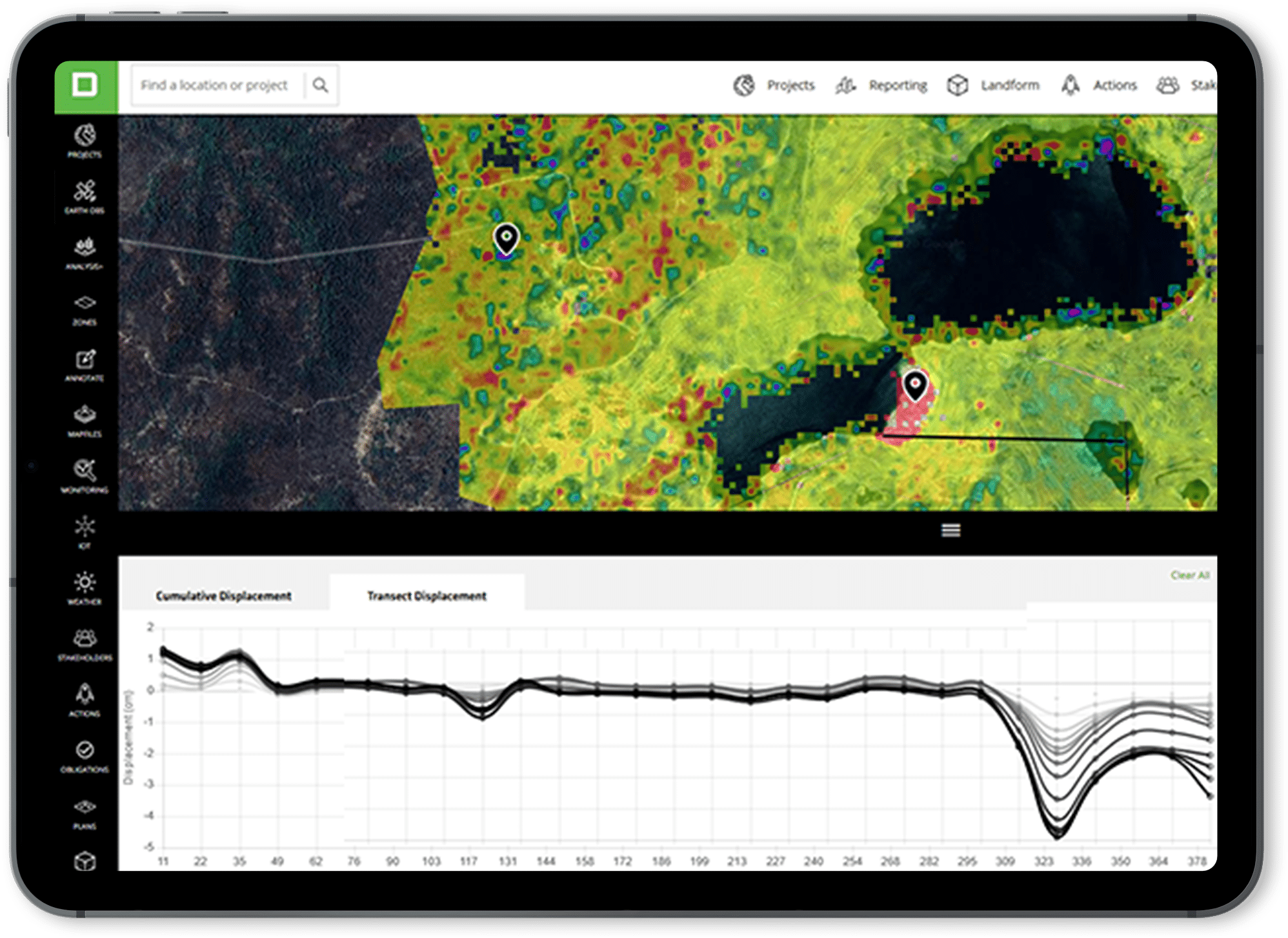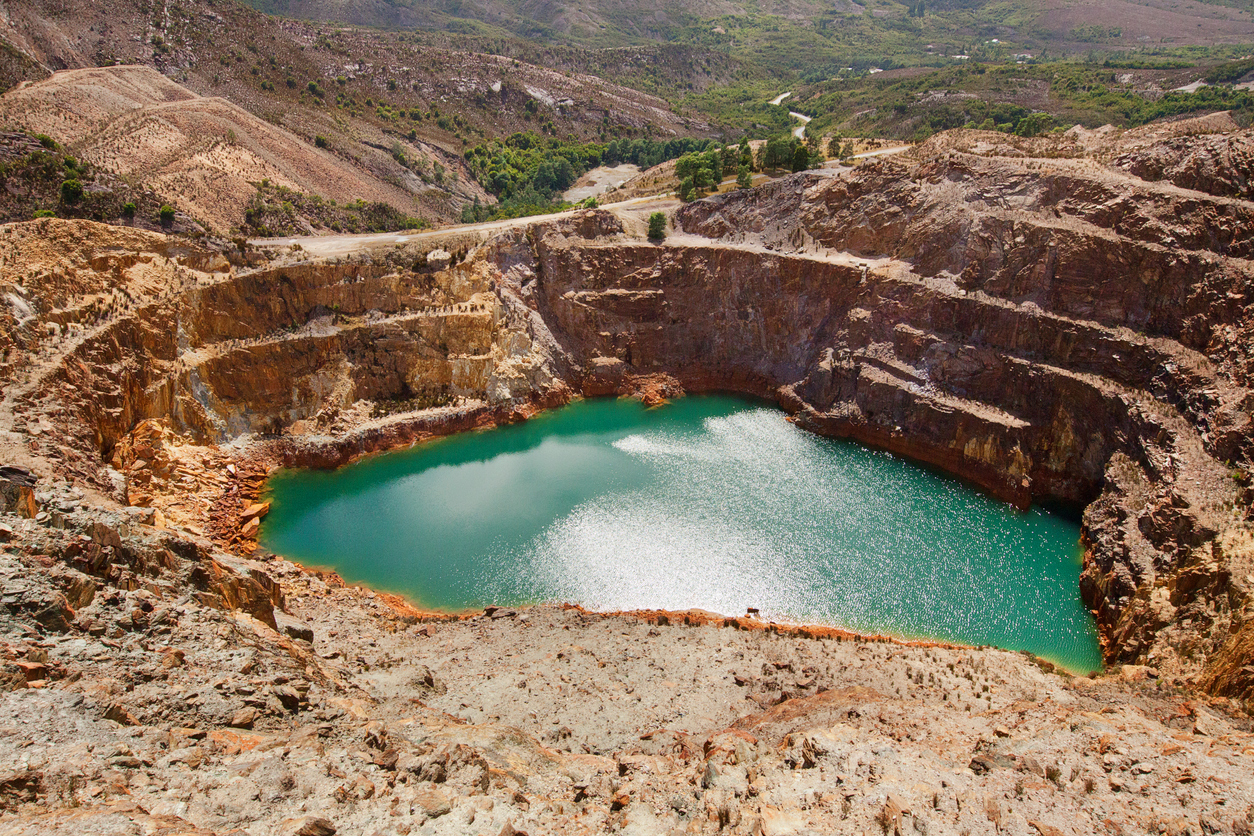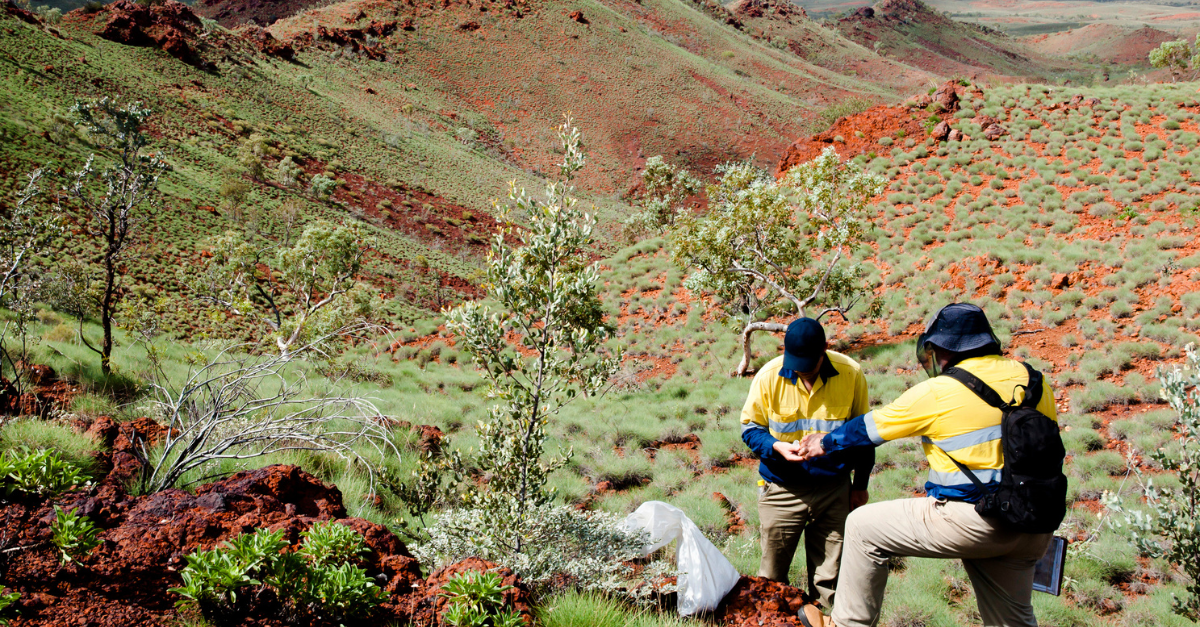Situation
Powerful data dashboards are one of the many ways the mining and resources industry is using advances in software to safely manage tailings storage facilities (TSFs). They drive down cost, protect people and the environment, and meet stringent new tailings governance requirements.
Our specialised Tailings Monitoring & Governance solution advances to a new level – combining an even bigger range of data sources to significantly streamline the complex, costly process of tailings monitoring, management and reporting.
Tailings insights on demand
Some of the world’s biggest engineering structures are TSFs. The far-reaching damage that occurs upon failure is one of the greatest risks for mine owners, and the communities and environments in which they operate.
Brazil’s Brumadinho tailings dam disaster, the largest and most recent in a spate of TSF failures, triggered an unprecedented overhaul of global safety regulations leading to the 2020 introduction of the world’s first global safety standards for tailings management.
The Problem
Resources companies are now required to be more transparent in their disclosure of tailings risk and insurers have been quick to line up behind the new standards making insurance cover difficult to secure unless miners can demonstrate standards compliance.
Mine operators estimated it could take up to six weeks per site to collate their tailings disclosure data using traditional manual processes and siloed datasets. For large-scale businesses, with more than 50 facilities, this can be an expensive and demanding process.
The Solution
Our cloud-based application combines, stakeholder engagement, environmental monitoring, regulatory compliance, mining waste and environmental management systems into a single, feature-rich package. It has secure global access, to industry, regulators, designers and operators who can share data and monitor facilities from anywhere in the world, at any time.
The customised dashboard module pulls top line information into a concise, graphical view. Users no longer have to drill down to dissect individual datasets. Instead, we deliver a snapshot of the status of TSF assets on a single screen.
No other TSF management solution brings together as many tailings and environmental monitoring components into a single, centralised repository.
Local data global view
Our innovative solution is helping market leaders keep their finger on the pulse of tailings storage infrastructure across their expansive global network.
The integrated system brings together a comprehensive suite of tools, including geo-spatial feeds such as earth observations, InSAR, landform, erosion tracking, weather conditions, overlayed with mapping and blast data, environmental monitoring & sampling results, and stakeholder details.
Offering company managers, technical specialists and operating staff around the world three levels of interrogation and the records they need for accurate, timely tailings disclosure with external analysts and regulators. The levels include:
- Macro – a lightweight database of key data for each TSF including actions, stakeholders and compliance.
- Monitoring – an overview of asset condition and status including Interferometric Synthetic Aperture Radar (InSAR), chemistry, satellite imagery, water quality and quantity.
- Micro – Detailed data from LiDAR, radar and IoT devices (monitoring piezometers, inclinometers, seismometers etc.)
This enables them to visualise facilities across multiple sites and quickly identify, assess and minimise failure risk for its TSF assets, while streamlining tailings disclosure and reporting across the company’s big asset inventory.
On the alert for tailings risk
Subtle changes in ground movement are often the first indicator that a TSF is vulnerable. Most TSFs fail because of factors such as foundation weakening, seepage, overtopping and earthquake damage. But, ground movement can be difficult to track using conventional methods, particularly when you are dealing with large, complex structures that can have walls over 25 metres high and more than five kilometres long.
Decipher puts these factors under the microscope, tracking minor changes in key variables and sending immediate safety alerts when conditions vary from pre-defined safety parameters.
Changes in soil and physical attributes, such as surface or groundwater, decant pond water levels and quality, and embankment conditions, are tracked using data from devices such as piezometers and monitoring bores. Or, via water levels and vibration. Land subsidence and movement is detected using remote sensing, such as satellite derived InSAR datasets. This can be visualised in real-time using LiDAR data and combined with specific insights into dam movement using hardware and data from providers such as GlassTerra.
One of the ways our system promotes safety and reduces TSF failure risk is combining a rich mix of integrated data to pinpoint subtle changes in condition and landform. Users receive an alert when changes are detected, view a graphic analysis on the dashboard, and then drill down into the different tools to extract more detailed information.
The complete picture
Our Tailings Monitoring & Governance solution has been built to support best industry practice, reducing the burden on companies to manage tailings facilities and meet new compliance requirements, including the Global Industry Standard on Tailings Management, Global Mining Review and International Council on Mining and Metals (ICMM) expectations.
Sophisticated workflows incorporated into the software refine and automate many of the tailings management processes. Operating and licence conditions are captured, tracked and stored, to ensure obligations are met and key risks are efficiently managed. Actions and tasks can be set up, with reminder and escalation notifications, along with tools to maintain and track environmental monitoring compliance limits and any excess over them.
Data from IBM’s Weather Channel streams directly into Decipher, providing a clear, more accurate context when forecasting, planning and tracking site activities.
Capacity to integrate with third party systems, including public registers such as the Global Tailings Portal, ensures Decipher users have an accurate, consistent central source of facts when it comes to managing and engaging with all stakeholders. Custom reports can be produced swiftly and easily and exported in various formats to meet requests for information from industry groups such as ICMM, Principles for Responsible Investment (PRI) and the United Nations Environmental Program (UNEP).
Being cloud-based, with robust security protections – you can also give independent and external users, such as insurers, investors, auditors and the Independent Tailings Review Board, access to a quick and effective knowledge base containing appropriate and vetted TSF data.
Summary
At its core, this is a solution that enables you to harness the power of existing, current and future data and store it in a secure and accessible cloud platform. It draws on Decipher’s powerful monitoring capabilities, consolidating tailings data from many different sources – satellite imagery, InSAR remote sensing, drone inspections, bore monitoring, pond water level monitoring, dust monitoring, IoT devices (monitoring piezometers, inclinometers, seismometers etc.), LiDAR, ground-based radar, CCTV and drone inspections – into one easy to use central location.
Want to see more? Experience an interactive demo of our Tailings Monitoring & Governance solution today!
FAQ:
Has insurance changed for tailings storage facilities?
Until recently, most mining companies had been able to transfer part of their tailings exposure into the insurance market, be it through their General Liability, Property or Environmental Liability Insurance programs as there was no specific 'tailings storage facility insurance'. However, following the devastating tailings dam failure in Brumadinho, Brazil, some operators are finding it difficult to obtain insurance, or have experienced increased premiums and reduced coverage.
How to obtain insurance for our TSF?
Mining operators are looking to technology that promotes safety and reduced risk approaches to help secure cover on their tailings dams, and potentially reduce insurance premiums.
Don’t miss another update!
- Decipher on LinkedIn
- Decipher on Twitter
- Decipher on Facebook
- Decipher on YouTube
- Latest news, tips, insights and updates here






